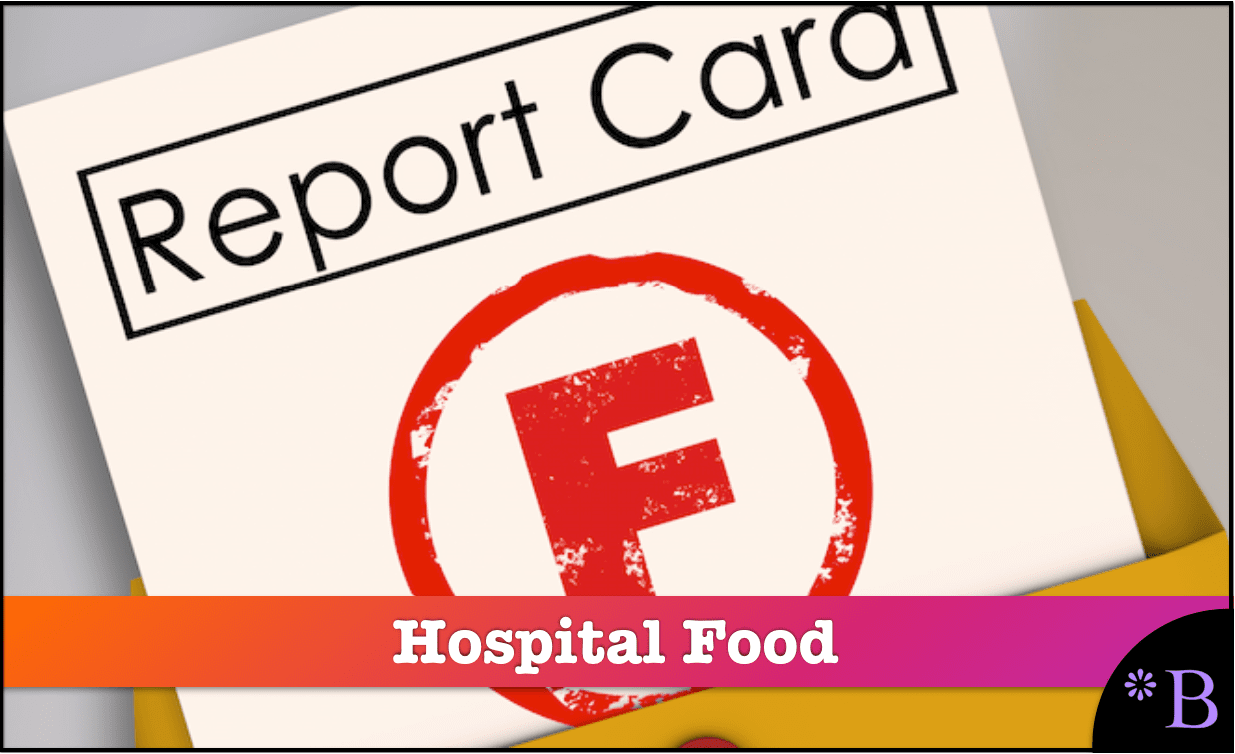The Irresponsible Poor Nutrition Quality of Hospital Food
Executive Summary
- The medical system massively dismisses the importance of nutrition to health.
- This extends to the poor nutrition offered in hospital food.

Introduction
During the covid pandemic, it was curious how little the medical establishment discussed nutrition and supplementation, even though several vitamins and minerals are highly effective against covid, as there is widespread nutrient deficiency in the population. While investigating this topic, I ran into the issue of the poor quality of food served in hospitals.
Our References for This Article
If you want to see our references for this article and related Brightwork articles, visit this link.
Denying Patients Nutritious Foods
Hospitals and the health authorities are utterly opposed to anything that will help improve the patient’s immune system.
This extends to their advice on supplementation, which is that one can obtain all of one’s nutrients from a “balanced diet,” to even serving patients food with low nutrient quality.
The low nutrient quality of hospital food has been known for many decades, and nothing has been done about it.
This is explained in the following quotations.
How the Poor Nutrient Quality of Foods Has Been Known For Decades
Malnutrition and nutrient deficiencies are widespread in the population of most developed countries. And yet, hospitals do little to try to address this in the food their offer to patients as is explained in the following quotation.
Hospital malnutrition affects 30-50% of patients worldwide, according to a September 2019 study published in the Journal of Parenteral and Enteral Nutrition. “Often patients enter the hospital malnourished or at risk of malnutrition and experience nutrition decline during their stay, placing them at higher risk for adverse outcomes following hospital discharge,” the study says.
And while the issue of malnutrition in hospitals has been a concern in the United States since the 1970s, it hasn’t been studied widely enough to make formal recommendations. But according to the researchers, approximately 1 in 3 patients in the U.S. are at risk of malnutrition.
An increased risk of malnutrition “often leads to poorer outcomes for both the patient and the healthcare system,” states the study, concluding that “patients who have diminished meal intake experience increased mortality risk.” – Huffington Post
How the Fast Food is Prevalent in Hospitals
It is a bit amazing that one would find fast food in hospitals, given the well-established association between fast food and health problems. Fast food companies are known for selling denitrified food. However, this is now common in US hospitals.
Hospitals are a place where people go to get healthy, but the same can’t be said about all hospital cafeterias, according to a recent study by the Physicians Committee for Responsible Medicine (PCRM).
The study analyzed food served to patients, staff, and visitors at U.S. hospitals in all 50 states and the District of Columbia and found that some hospitals housed as many as five fast-food outlets and featured menus that were dominated by foods high in fat, cholesterol, sugar, and sodium. For hospitalists, many of whom spend 50, 70, and even 90 hours per week in the hospital, the lack of healthy eating options can be especially problematic. – The Hosptialist
And a review of contracts indicates that the hospitals are incentivized to maximize food sales for fast food companies.
The Physicians Committee for Responsible Medicine used state open records laws to obtain patient menus from 24 hospitals. They also obtained a contract between Chik-Fil-A and the University of Mississippi Medical Center, a contract between McDonalds and Broward General Medical Center, and a heavily redacted Wendy’s contract from Wexner Medical Center in Ohio (PCRM, personal communications). Want a taste of the language? The contract between Grady Memorial Hospital in Atlanta and McDonalds has a percentage rent so that the more burgers sold, the more money the medical center makes. The contract between the University of Mississippi Medical Center and Chik-Fil-A asks that the hospital “make every effort to increase the sales and business and maximize Gross Receipts.” The menu includes nuggets and biscuits with bacon/sausage/egg/cheese. I bet you do not see that on billboards promoting the medical center. – Huffington Post
How Poor Quality Food is Justified and Normalized by the Hosptial Staff
Hospitals are a place where people go to get healthy, but the same can’t be said about all hospital cafeterias, according to a recent study by the Physicians Committee for Responsible Medicine (PCRM).
The study analyzed food served to patients, staff, and visitors at U.S. hospitals in all 50 states and the District of Columbia and found that some hospitals housed as many as five fast-food outlets and featured menus that were dominated by foods high in fat, cholesterol, sugar, and sodium. For hospitalists, many of whom spend 50, 70, and even 90 hours per week in the hospital, the lack of healthy eating options can be especially problematic.
When a couple of the hospital’s dieticians were confronted about Freedhoff’s photo of hospital food, they told him that “if our hospital offered something like an organic kale salad with a side of quinoa to some of our patients in the ER, there would be massive rioting.”
Freedhoff’s tweet illustrates a huge contradiction: People are admitted to hospitals to recover from sickness. To recover from sickness, a healthy diet must be maintained. And scores of hospitals offer nothing in the way of good diets. So what are patients to do? – ATTN